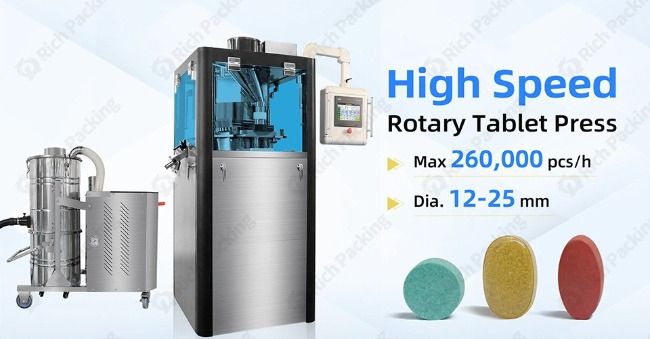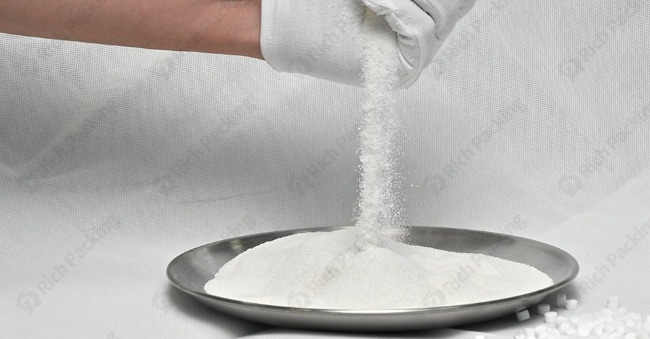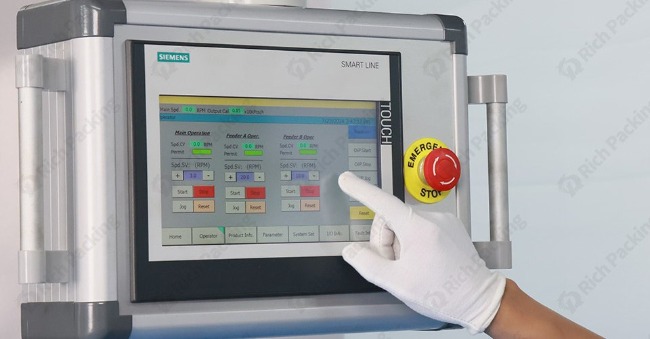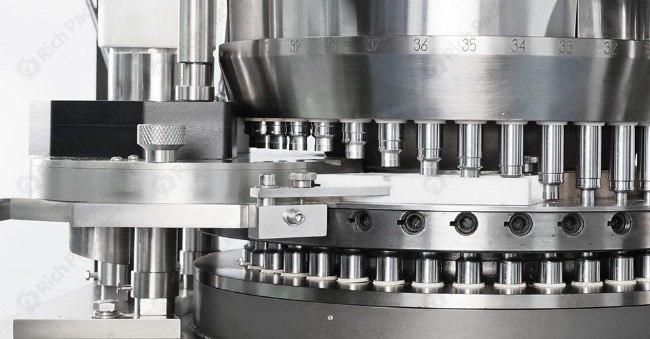Categories
New Blog
Tags
Introduction
How can you effectively reduce dust in tablet presses to ensure a safer, cleaner, and more compliant pharmaceutical manufacturing environment? This article explores essential strategies, from formulation adjustments to advanced equipment and operational controls, providing actionable insights to tackle this critical challenge head-on and protect both product and personnel.

Dust generation during tablet compression isn't just a housekeeping issue; it's a significant concern with far-reaching implications in the pharmaceutical industry. Failure to adequately reduce dust in tablet presses can lead to serious consequences. These include operator health risks (respiratory issues, allergic reactions), cross-contamination compromising product purity, increased explosion hazards (especially with fine organic powders), reduced yield, and accelerated wear on delicate press components. Adhering to Good Manufacturing Practices (GMP) and occupational safety regulations (like OSHA or COSHH) mandates effective dust control. Therefore, implementing robust strategies is paramount for compliance, safety, and operational excellence.
Before you can effectively reduce dust in tablet presses, you must understand its origins. Dust generation isn't a single-point problem; it arises from multiple stages within and around the compression process. Pinpointing these sources allows for targeted interventions.
The inherent properties of your powder formulation play a major role. Powders with a high percentage of fine particles, poor flowability, or inadequate binding characteristics are naturally more prone to dusting. The type and amount of excipients used, particularly lubricants, can also influence dust levels during handling and compression.
Every time powder is moved, there's potential for dust generation. This includes charging hoppers, transfer chutes, and any manual scooping or feeding processes. Open handling systems or poorly sealed transfer points are significant contributors to airborne dust. Ensuring contained transfer is key.
The mechanical actions within the tablet press are primary dust generators. Air trapped within the powder blend is expelled during pre-compression and main compression, carrying fine particles with it. Friction between punches, dies, and powder also contributes. High press speeds can exacerbate this effect significantly.
As tablets are ejected from the die and guided towards the discharge chute or de-duster, fine particles adhering to the tablet surface or generated during ejection can become airborne. The efficiency of the tablet take-off bar and discharge path influences how much dust escapes.
General machine vibration can dislodge accumulated powder particles. Furthermore, air currents within the compression suite, whether from HVAC systems or personnel movement, can disturb settled dust, making it airborne again. Proper airflow design is critical.
While essential, cleaning processes themselves can temporarily increase airborne dust if not performed correctly. Using compressed air for cleaning, for example, can disperse dust widely. Wet cleaning methods or contained vacuuming are preferable to reduce dust in tablet presses during maintenance.
Mitigating dust requires a multi-faceted approach, addressing the sources identified above. Implementing a combination of the following strategies will yield the best results in your efforts to reduce dust in tablet presses.
Your first line of defense often lies within the formulation itself. Optimizing the powder blend can significantly minimize its propensity to generate dust during handling and compression.
Granulation is arguably the most effective formulation strategy to reduce dust in tablet presses. By binding fine powder particles together into larger, more free-flowing granules (using wet or dry granulation methods), you drastically reduce the amount of respirable fines. This not only minimizes dust but also improves powder flow and compression consistency. Consider the optimal granule size and strength for your specific API and press.
Even within a granulated batch or a direct compression blend, controlling the overall PSD is vital. Minimizing the percentage of particles below a certain size threshold (e.g., < 50 microns) through milling techniques or classification before compression can significantly reduce dust in tablet presses. This requires careful characterization and control throughout raw material sourcing and processing.

Modern tablet presses incorporate numerous features specifically designed to contain or extract dust at the source. Leveraging these features is critical.
Modern presses often feature better-enclosed compression zones. Look for machines with tightly sealed doors, transparent panels with good gasket integrity, and minimized gaps around the turret and tooling. This physical containment is fundamental to reduce dust in tablet presses. Some designs offer higher levels of containment, approaching isolator-like performance.
Effective dust extraction is crucial. Presses should have strategically placed extraction nozzles close to the points of dust generation:
Punch tip design can influence dust. Features like relief grooves or tapered dies can sometimes help manage air displacement during compression, potentially reducing particle ejection. Ensure tooling is maintained in excellent condition; worn or damaged tooling can generate more fines. Specialized tooling coatings might also offer marginal benefits in reducing powder adhesion.
Presses equipped with WIP or CIP systems allow for automated, contained cleaning. This minimizes operator exposure during cleaning and prevents the dispersion of dust associated with manual dry cleaning methods. While primarily for cleaning efficiency and cross-contamination control, it contributes indirectly to managing overall dust levels in the suite. It’s a key factor when aiming to reduce dust in tablet presses during non-operational phases.

How you operate and maintain your tablet press has a direct impact on dust levels. Rigorous Standard Operating Procedures (SOPs) and well-trained operators are essential.
Ensure the press is set up correctly according to the validated parameters for the specific product. This includes:
Minimize open handling of powders. Utilize closed transfer systems:
Develop and strictly follow SOPs for cleaning:
Well-trained operators are crucial. Ensure they understand:
Beyond the press itself, other equipment plays a vital role in capturing and managing dust generated during the process.
The dust collector connected to the press extraction ports is critical. It should be:
Immediately after ejection, tablets often carry loose surface powder. A tablet de-duster (either upward-vibrating or brush-type) removes this surface dust before the tablets proceed to packaging or coating. Combining de-dusting with metal detection is common. Ensure the de-duster itself is connected to a dust extraction system.
As mentioned under operational practices, vacuum transfer systems are ancillary equipment specifically designed for contained powder movement, directly addressing a major source of dust generation during hopper loading. They are a key investment to reduce dust in tablet presses.

The design and control of the manufacturing environment itself contribute significantly to dust management.
The Heating, Ventilation, and Air Conditioning (HVAC) system should be designed for pharmaceutical cleanrooms:
Maintaining appropriate relative humidity (RH) levels (often in the 40-60% RH range, product permitting) can help reduce static electricity, which can cause fine powders to cling to surfaces and then become easily airborne. Conversely, very high humidity can cause powder flow issues. Controlled humidity helps indirectly reduce dust in tablet presses.
Physically separating tablet compression operations in dedicated rooms with appropriate airlocks for personnel and materials provides a fundamental level of containment, preventing dust migration to other manufacturing areas.
For highly potent or sensitive products, standard dust control measures may be insufficient. Advanced containment technologies provide the highest level of protection.
Tablet presses can be fully enclosed within rigid or flexible wall isolators. This provides a highly contained environment, protecting the operator and the external environment from potent APIs. All material transfers occur through specialized ports (e.g., Rapid Transfer Ports - RTPs). Isolators represent the pinnacle of technology to reduce dust in tablet presses for high-potency applications.
SBVs provide a contained method for transferring powders between containers (like IBCs) and process equipment (like tablet press hoppers). They consist of two mating halves ('active' and 'passive') that create a sealed connection during transfer and minimize powder release upon disconnection. Using SBVs significantly helps reduce dust in tablet presses during loading.
Implementing strategies is only part of the equation. You need to verify their effectiveness through monitoring.
Always operate within the framework of relevant regulations and guidelines. Key considerations include:
| Key Methods | Primary Benefit | Considerations | |
|---|---|---|---|
| Formulation | Granulation, Optimized Excipients, PSD Control | Reduces inherent dustiness of the powder | Development time, potential process changes |
| Equipment Design | Enclosures, Seals, Extraction Ports, WIP/CIP | Contains/Removes dust at the source | Capital investment, requires proper maintenance |
| Operational Practices | Correct Setup, Speed Control, Cleaning, Training | Minimizes dust generation during routine operation | Requires discipline, rigorous SOPs, training |
| Ancillary Equipment | Dust Collectors, De-Dusters, Vacuum Transfer | Captures fugitive dust, cleans tablets, transfers safely | Investment, integration, ongoing maintenance |
| Environmental Control | HVAC, Humidity Control, Dedicated Rooms | Contains dust within the area, reduces static | Facility design, energy consumption |
| Containment | Isolators, Split Butterfly Valves | Highest level of operator/product protection |
Effectively managing and reducing dust in tablet presses is achievable through a systematic, multi-pronged approach. It requires understanding dust sources, optimizing formulations, leveraging modern press designs and ancillary equipment, implementing strict operational and cleaning protocols, and ensuring a controlled environment. Continuous monitoring and adherence to regulatory standards are essential to sustain improvements.
Ready to significantly reduce dust in tablet presses within your facility? Contact us today to discuss your specific challenges and explore tailored solutions or advanced equipment options. Let's work towards a cleaner, safer, and more efficient manufacturing process.